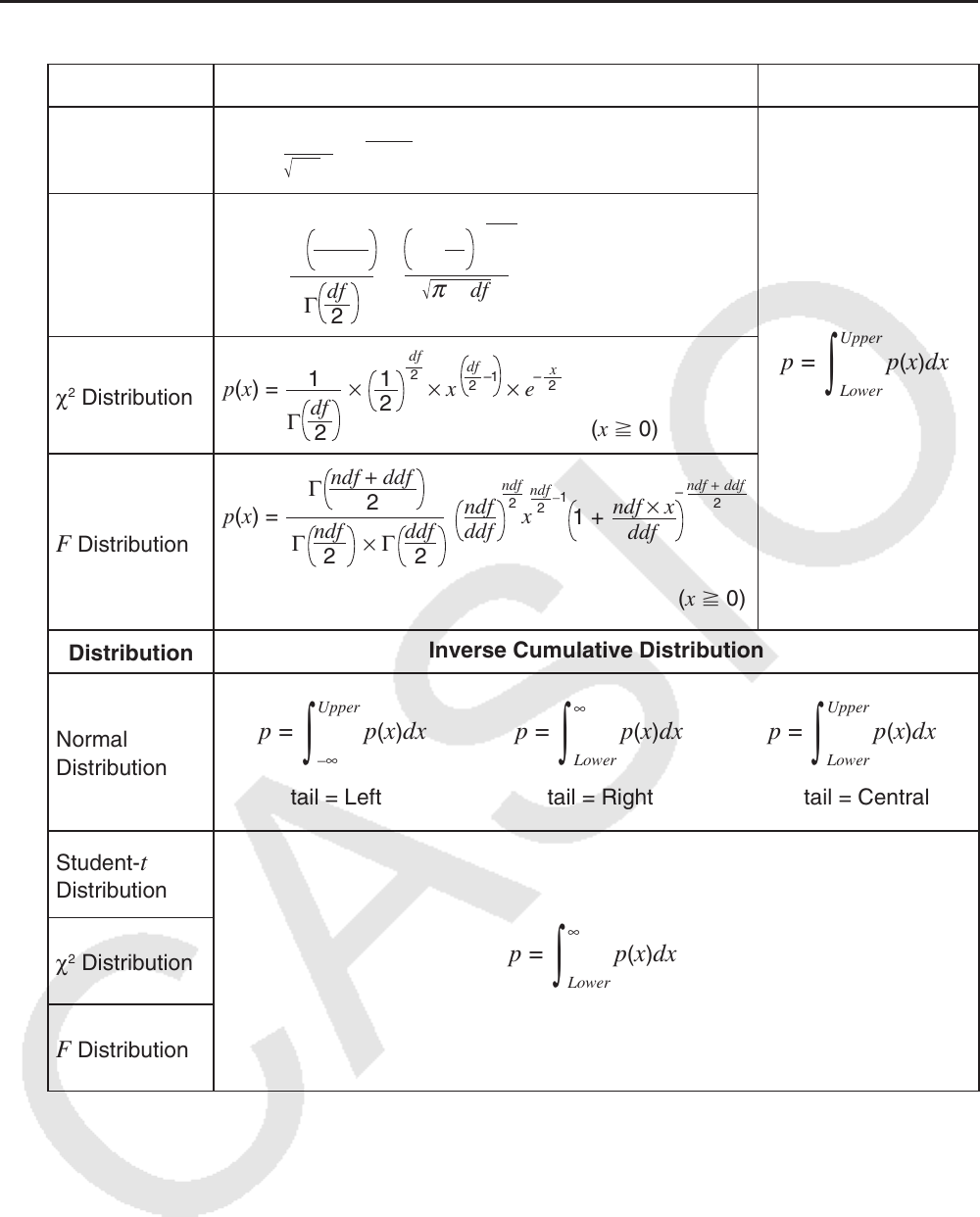User Manual
Table Of Contents
- Contents
- Getting Acquainted — Read This First!
- Chapter 1 Basic Operation
- Chapter 2 Manual Calculations
- 1. Basic Calculations
- 2. Special Functions
- 3. Specifying the Angle Unit and Display Format
- 4. Function Calculations
- 5. Numerical Calculations
- 6. Complex Number Calculations
- 7. Binary, Octal, Decimal, and Hexadecimal Calculations with Integers
- 8. Matrix Calculations
- 9. Vector Calculations
- 10. Metric Conversion Calculations
- Chapter 3 List Function
- Chapter 4 Equation Calculations
- Chapter 5 Graphing
- 1. Sample Graphs
- 2. Controlling What Appears on a Graph Screen
- 3. Drawing a Graph
- 4. Saving and Recalling Graph Screen Contents
- 5. Drawing Two Graphs on the Same Screen
- 6. Manual Graphing
- 7. Using Tables
- 8. Modifying a Graph
- 9. Dynamic Graphing
- 10. Graphing a Recursion Formula
- 11. Graphing a Conic Section
- 12. Drawing Dots, Lines, and Text on the Graph Screen (Sketch)
- 13. Function Analysis
- Chapter 6 Statistical Graphs and Calculations
- 1. Before Performing Statistical Calculations
- 2. Calculating and Graphing Single-Variable Statistical Data
- 3. Calculating and Graphing Paired-Variable Statistical Data (Curve Fitting)
- 4. Performing Statistical Calculations
- 5. Tests
- 6. Confidence Interval
- 7. Distribution
- 8. Input and Output Terms of Tests, Confidence Interval, and Distribution
- 9. Statistic Formula
- Chapter 7 Financial Calculation
- Chapter 8 Programming
- Chapter 9 Spreadsheet
- Chapter 10 eActivity
- Chapter 11 Memory Manager
- Chapter 12 System Manager
- Chapter 13 Data Communication
- Chapter 14 Geometry
- Chapter 15 Picture Plot
- Chapter 16 3D Graph Function
- Appendix
- Examination Mode
- E-CON4 Application (English)
- 1. E-CON4 Mode Overview
- 2. Sampling Screen
- 3. Auto Sensor Detection (CLAB Only)
- 4. Selecting a Sensor
- 5. Configuring the Sampling Setup
- 6. Performing Auto Sensor Calibration and Zero Adjustment
- 7. Using a Custom Probe
- 8. Using Setup Memory
- 9. Starting a Sampling Operation
- 10. Using Sample Data Memory
- 11. Using the Graph Analysis Tools to Graph Data
- 12. Graph Analysis Tool Graph Screen Operations
- 13. Calling E-CON4 Functions from an eActivity

6-71
k Distribution (Continuous)
Distribution Probability Density
Cumulative Distribution
Normal
Distribution
πσ
2
p(x) =
1
e
–
2
2
σ
(x – μ)
2
μ
(
> 0)
σ
p = p(x)dx
Upper
Lower
∫
Student- t
Distribution
p(x) =
×
Γ
Γ
× df
π
–
df+1
2
2
df
2
df + 1
df
x
2
1 +
χ
2
Distribution
p(x) =
×
(x 0)
Γ
1
2
df
df
2
×
x
2
1
df
2
–1
x
2
–
× e
F Distribution
ndf
2
x
ddf
ndf
ndf
2
–1
ddf
ndf × x
1 +
ndf + ddf
2
p(x) =
–
Γ
2
ndf + ddf
Γ
2
ndf
× Γ
2
ddf
(x 0)
Distribution
Inverse Cumulative Distribution
Normal
Distribution
p = p(x)dx
Upper
–∞
∫
p = p(x)dx
Lower
∞
∫
p = p(x)dx
Upper
Lower
∫
tail = Left tail = Right tail = Central
Student-
t
Distribution
p = p(x)dx
Lower
∞
∫
χ
2
Distribution
F Distribution










